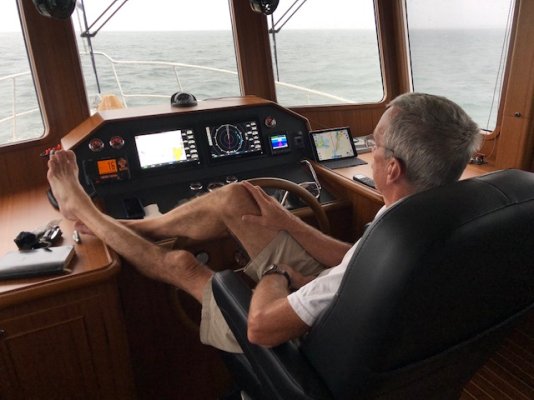I don't use Auto route, not even sure if I have it!
I zoom out (Time Zero on a PC with 24" screen) and manually enter waypoints to set the general route. The I go back to start of route and zoom in for more detail on the charts, and move the waypoints or insert extra waypoints if needed, or if it makes a better route overall.
I'm using a Furuno NavPilot, and NN3D (flybridge) & Furuno radar all integrated with the PC charting. After raising anchor I start the boat toward the first waypoint and select NAV. At each waypoint there is a short alarm which I can silence, but even if I don't then the boat just makes the turn and carries on. Thats my preferred setting. Like TT noted above, the waypoint is there because a turn is desirable or needed, so default should be to make the turn.
I'm usually single handing. If I go to the galley to make a coffee, or to the head, I only do so when radar/AIS/visual check of 360° indicates no traffic or obstructions within 10 minutes of my travel time. And I am always at the helm for turns, even though I usually do absolutely nothing but watch.
At times I might 'skip waypoint' to automatically change heading while remaining in NAV mode to avoid another boat. But usually I'll avoid boats that are fishing by going from NAV to Standby, change heading then press AUTO to hold that heading until clear of the other boats. At that point I'd normally then press NAV again.
If I was a long way off the route then the AP might want to return to the route by making a sharper turn than I would like. In that case I go to standby, set a preferred heading to return to the route and use AUTO to maintain that heading until I get a bit closer to the route, and when somewhere near the route press NAV.
Using NAV is a godsend. I can select the amount of XTE the AP can have before making course changes, and have it set such that it follows the route pretty closely. But not set the allowable XTE so tight that the AP is having to 'work overtime' making small corrections.
There is a lot of functionality in the NavPilot that I've never bothered to learn, such as setting a trolling pattern to follow and other stuff that commercial fishermen might like to use.


